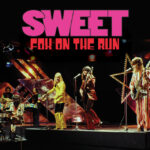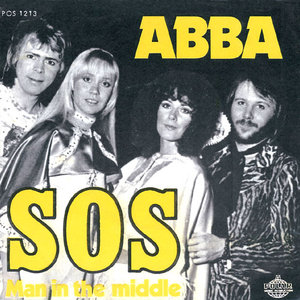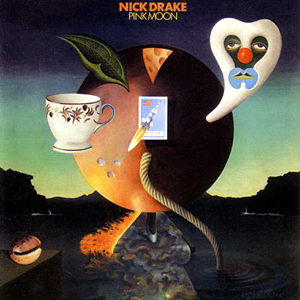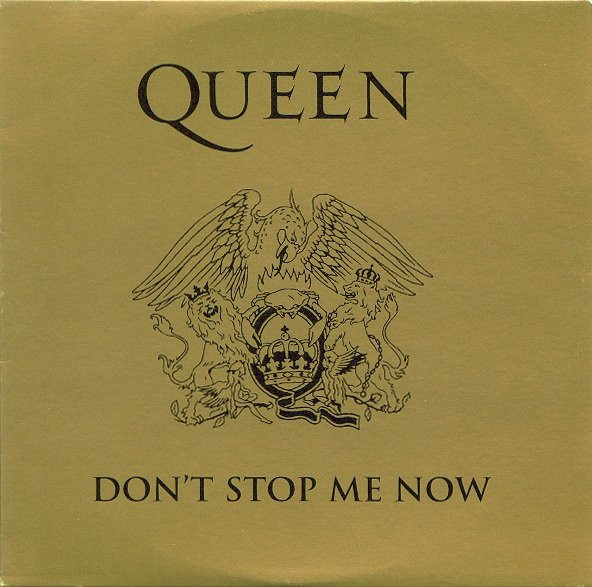 There’s a kind of electricity that only the 1970s could produce—a decade that danced between excess and rebellion, between glitter and grime. And right in the middle of that colorful chaos stood Sweet, one of glam rock’s most infectious and underappreciated forces. While they’re often remembered for bubblegum-rock anthems like “Little Willy” and “Ballroom Blitz,” their 1975 hit “Fox on the Run” represents something much more substantial. It’s a defining moment of artistic autonomy, a bridge between the sugary shimmer of glam and the hard-edged bite of arena rock, wrapped in one of the catchiest choruses of the era.
There’s a kind of electricity that only the 1970s could produce—a decade that danced between excess and rebellion, between glitter and grime. And right in the middle of that colorful chaos stood Sweet, one of glam rock’s most infectious and underappreciated forces. While they’re often remembered for bubblegum-rock anthems like “Little Willy” and “Ballroom Blitz,” their 1975 hit “Fox on the Run” represents something much more substantial. It’s a defining moment of artistic autonomy, a bridge between the sugary shimmer of glam and the hard-edged bite of arena rock, wrapped in one of the catchiest choruses of the era.
This wasn’t just another chart-topper. “Fox on the Run” was Sweet’s declaration of independence, their self-written statement that they could thrive without their hitmaking production team, Nicky Chinn and Mike Chapman. What emerged from that creative liberation was something bold and timeless—a rock song that glitters and snarls, with equal measures of sweetness and attitude.
Breaking Free from the Machine
By 1975, Sweet were veterans of the British glam scene. They had paid their dues in glitter and eyeliner, churned out by the Chinnichap songwriting factory like a pop-rock assembly line. “Wig-Wam Bam,” “Block Buster!,” “Hell Raiser,” “The Ballroom Blitz”—these songs were undeniable hits, but they came at a cost. The band’s own creative ambitions were often sidelined by the producers’ formulaic pop sheen. Sweet wanted to be taken seriously as musicians. They didn’t just want to be pretty faces in platform boots; they wanted to roar.
“Fox on the Run” was their chance to do exactly that. Written entirely by the band—Brian Connolly, Steve Priest, Andy Scott, and Mick Tucker—the song captured their frustration and freedom in one sleek, perfect package. The result wasn’t just a hit; it was their first self-penned single to reach the UK Top 5 and the U.S. Top 10. For the first time, Sweet’s voice—both musically and metaphorically—was fully their own.
A Song That Chases You
From the opening synthesizer pulse to the final echoing chorus, “Fox on the Run” feels like a chase. It’s a song that moves—fast, glamorous, and a little bit dangerous. The first few seconds immediately grab you with that shimmering synth hook, which feels almost futuristic for its time. Then the guitars kick in, all crunchy and sharp, balancing sweetness with swagger.
Brian Connolly’s vocals glide effortlessly between smooth seduction and sneering confidence, perfectly embodying the song’s title. The “fox” in question might be a woman, might be fame itself—it doesn’t matter. What matters is the tension between attraction and pursuit, the way the band captures the push-pull of glamour and emptiness.
“Fox on the run / You scream and everybody comes running…” Connolly croons with that honeyed rasp that made him one of glam’s most distinctive frontmen. The lyric is sly and knowing, a little cynical but not cruel. It’s about surface and spectacle—the kind of person who thrives on attention but loses something real in the process. You can feel Sweet’s own disillusionment bleeding through, hidden beneath the glitzy production.
The Sound of Evolution
What makes “Fox on the Run” so fascinating is how it sonically straddles two worlds. On one hand, it’s pure glam: tight harmonies, infectious melodies, and a chorus built for shouting from a stadium crowd. But underneath that glitter, there’s the muscle of hard rock. Andy Scott’s guitar riffs are punchier and meaner than anything from their earlier singles. Mick Tucker’s drumming is thunderous yet precise—one of those rare examples where power and polish coexist perfectly.
And then there’s Steve Priest’s bass—melodic, funky, and vital. Priest had an underrated gift for making basslines dance rather than just thump, and here he ties the whole track together with flair. The rhythm section gives the song its forward momentum, like a hot rod tearing down a neon-lit street at midnight.
The production, handled by the band and Mike Chapman (in a more collaborative role than before), is clean but not sterile. There’s air around the instruments, allowing the song to breathe in a way earlier Sweet singles didn’t. The layered vocals shimmer without overwhelming, and that synth hook—courtesy of Andy Scott—adds a new texture that hinted at the coming rise of synth-infused rock.
You can almost hear Sweet evolving in real time. They were no longer just participants in glam rock—they were shaping its future.
Lyrical Layers Behind the Glitter
At first listen, “Fox on the Run” sounds like a straightforward tale of a glamorous woman who lives for attention. But beneath that surface, there’s a knowing irony. Sweet weren’t outsiders looking in—they were insiders warning of the trap. The lyrics can be read as a veiled critique of fame itself: the kind of fleeting, performative spotlight that glam rock both celebrated and mocked.
The song’s fox is hunted, adored, and isolated all at once. “You think you’ve got a pretty face / But the rest of you is out of place,” Connolly sings, delivering the line with both charm and bite. It’s a mirror of Sweet’s own experience—adored for their image, underestimated for their substance.
That’s what gives “Fox on the Run” its staying power. It’s a hook-laden anthem about disillusionment, a shiny pop-rock gem with a soul that’s slightly cracked. Sweet were writing about themselves, and in doing so, they gave glam rock one of its most self-aware songs.
Glam’s Last Great Roar
By the mid-1970s, glam rock was starting to fade. Punk was on the horizon, ready to rip down the glitter-covered posters and tear the stage apart. Bowie had already shapeshifted into soul and plastic funk. T. Rex was losing steam. Slade and Mott the Hoople were struggling to evolve. But Sweet? They refused to go quietly.
“Fox on the Run” wasn’t just another single—it was glam’s last great roar before the crash. It combined everything the genre did best: attitude, melody, flash, and feeling. It also hinted at where rock was headed next. Listen to the song today and you can hear the DNA of future styles—power pop, arena rock, even elements of early new wave.
It’s no surprise that bands from Def Leppard to The Darkness have cited Sweet as an influence. Their sense of melody, their mix of camp and confidence, their polished aggression—all of it became part of rock’s evolutionary chain.
The Two Versions: A Tale of Refinement
There are actually two main versions of “Fox on the Run.” The first appeared on Sweet’s 1974 album Desolation Boulevard (the UK version). This early take is rawer, with a heavier guitar presence and less gloss. It feels closer to what you’d hear in a sweaty rock club—a bit unrefined but full of fire.
Then came the single version in 1975, remixed and polished for international release. That’s the one that became a hit. It’s brighter, tighter, and infused with the synth intro that made it instantly recognizable. Some purists prefer the album cut for its grit; others love the single for its sleek perfection. Both versions tell the same story: a band finding its identity in the space between pop glamour and rock grit.
That duality became Sweet’s trademark—and their curse. Too pop for the hard rockers, too heavy for the pop crowd. But looking back now, that tension is what made them special.
Brian Connolly’s Underrated Brilliance
It’s impossible to talk about “Fox on the Run” without highlighting Brian Connolly’s voice. He was one of rock’s great frontmen, capable of flipping from silky croon to gritty snarl in a single breath. On this track, his delivery is masterful—controlled but never cold, theatrical but never fake.
Connolly’s ability to inject emotion into a song about artifice is what elevates it. You can sense his empathy for the “fox,” his awareness of what it’s like to live behind a mask. It’s bittersweet, especially knowing his later struggles with health and fame. “Fox on the Run” captures him at his peak, before the road and the bottle took their toll.
Legacy and Afterglow
Over the decades, “Fox on the Run” has continued to shimmer in popular culture. It’s been featured in films (Dazed and Confused, Guardians of the Galaxy Vol. 2), television, and countless playlists that celebrate 1970s rock. Its chorus still feels alive—an anthem for anyone who’s ever chased or been chased by the spotlight.
More importantly, it solidified Sweet’s place as more than just glam rock hitmakers. It proved they had depth, musicianship, and vision. The song’s success opened the door for their heavier material—tracks like “Action” and “Set Me Free”—which would influence hard rock and metal bands throughout the ’80s.
Listening today, you can hear why “Fox on the Run” endures. It’s perfect pop structure meeting rock heart. It’s the sound of a band breaking free while still embracing what made them special. It’s a time capsule of the mid-’70s that somehow feels modern every time that synth riff hits.
The Chase That Never Ends
In the end, “Fox on the Run” isn’t just a song about pursuit—it is the pursuit. The chase for fame, freedom, and authenticity. The struggle to be seen for who you are rather than what you represent. Sweet captured all of that and wrapped it in a melody you can’t forget.
It’s the rare glam rock track that shines as brightly today as it did half a century ago. There’s joy in it, and sadness too—the feeling of being on top of the world but knowing it can’t last. Like its namesake, “Fox on the Run” is sleek, beautiful, and just out of reach.
For Sweet, it was the moment everything came together. For the rest of us, it remains a glittering anthem of escape and self-expression—a reminder that even when the lights fade, the music, like the chase, goes on.
Final Verdict: “Fox on the Run” stands as Sweet’s masterpiece—a song that defined their independence and gave glam rock one of its most enduring anthems. It’s catchy, clever, and emotionally rich, the perfect balance of pop shine and rock snarl. Almost fifty years later, it still runs circles around most of what’s on the radio.


